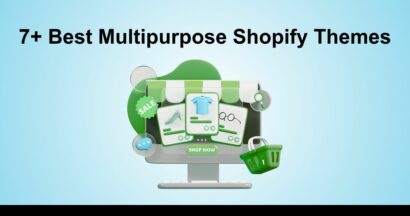The e-commerce gold rush is well past its chaotic beginnings. These days, success in the space doesn’t come from being the first to set up a store or from slapping a logo on a dropshipped gadget. It comes from something less flashy and more cerebral: strategy.
We’re long past the era where throwing money at Facebook ads and hoping for the best could generate consistent returns. If you’re serious about growing an e-commerce brand, strategic thinking isn’t just helpful—it’s foundational. But what does that actually mean in practice? And more importantly, how does it drive revenue?
Let’s break it down.
Why Ecom Needs a Brain, Not Just a Budget
There’s a strange paradox in online retail: it’s never been easier to start a store, but it’s never been harder to grow one. Competition is relentless. Margins are thinner. Customer expectations have skyrocketed.
And yet, many store owners still operate reactively. They tweak their sites based on hunches, chase whatever marketing trend is hot this month, and throw discounts around like confetti. It’s all very noisy—and often, very unprofitable.
This is where strategy cuts through. It starts with stepping back to see the whole machine. What’s your brand actually about? Who are you selling to? What journey are they on before they ever land on your product page? Strategic thinking forces you to confront those questions, which, inconveniently, don’t have quick answers.
Still, if you want to grow beyond impulse-driven wins and build a revenue machine that runs consistently, those are the questions worth answering.
Building a Strategic Approach to Scale
At some point, every founder hits a wall. Maybe traffic is decent, but conversions are flatlining. Maybe the store is converting well, but customer acquisition costs keep creeping up. This is where a strategic approach for scaling online stores becomes crucial.
And it’s not just about fixing problems—it’s about building a blueprint for sustainable growth. Strategy, in this context, is about aligning multiple moving parts:
Conversion Funnels That Don’t Leak
It’s shocking how many e-commerce stores pay for traffic and then fail to convert it because of clunky checkout experiences or generic product descriptions. Strategic thinking means asking what friction exists—and removing it.
Sometimes that means testing new page designs. Sometimes it’s rewriting copy to actually resonate with the audience. Occasionally, it means admitting your current offer just doesn’t hit hard enough.
But the key is doing it systematically—not guessing, not hoping.
Smart Data, Not More Data
E-commerce is flooded with analytics dashboards, but not all data is useful. Strategic operators focus on the metrics that actually move the needle. That often means paying less attention to vanity metrics (likes, impressions, etc.) and more to things like return on ad spend, customer lifetime value, and retention cohorts.
Understanding why a segment of customers returns, or why another drops off after the first purchase, is far more valuable than obsessing over average session duration.
It’s easy to drown in data. Strategy is knowing which numbers actually matter.
When Strategy Becomes Culture
What’s interesting is that strategic thinking isn’t just a one-off planning session or a PowerPoint slide. Over time, it becomes a mindset—embedded into how a team makes decisions, prioritizes tasks, and evaluates results.
This is where e-commerce brands start to separate themselves.
The top-performing stores don’t chase every marketing channel. They’re choosy. They invest in SEO only if it aligns with long-term goals. They test influencer partnerships only if the audience actually overlaps. They optimize their PDPs not because some guru said so on Twitter, but because customer feedback reveals consistent objections.
It’s a discipline. It’s also incredibly freeing.
When you know where you’re going, and why, you stop wasting time on the stuff that doesn’t serve that goal.
The Uncomfortable Truth About Growth
Growth doesn’t always feel good. Strategy often involves decisions that look bad in the short term. Slowing down ad spend to test new messaging. Raising prices to reflect premium value (and losing some customers in the process). Firing a supplier to fix fulfillment delays, even if it means a temporary hit.
None of those choices look sexy on a dashboard. But they’re often the moves that unlock the next level of scale.
And that’s the crux of it: strategic thinking isn’t just about what you do—it’s about what you don’t do. What you say no to. Where you cut the fat. How you create space for the stuff that actually works.
Conclusion: Strategy Isn’t Optional
It’s tempting to think of strategy as something you’ll get around to later—after the next product launch, or once Black Friday is out of the way. But in reality, the sooner you embed it into your operations, the faster (and smoother) your growth becomes.
Revenue follows clarity. And clarity comes from thinking, not guessing.
In a landscape where everyone’s running fast, sometimes the smartest move is to pause, zoom out, and plan. That’s how real growth happens—not just in traffic spikes or TikTok wins, but in long-term, sustainable, strategic revenue.
